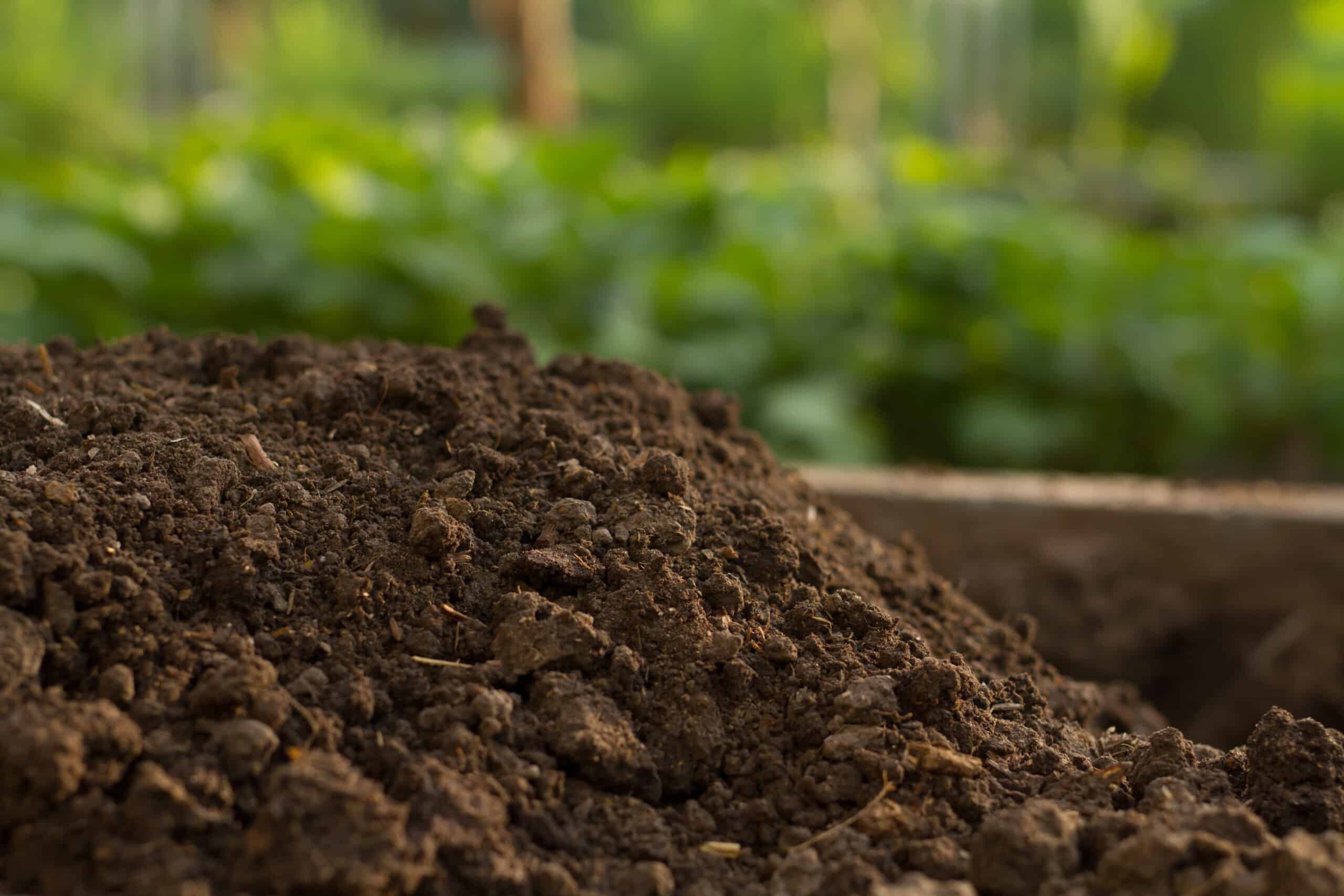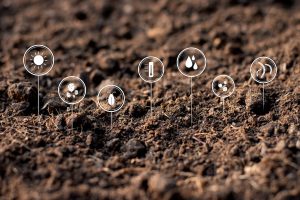Apr 25, 2024



When we talk about managing the biological aspect of soil, and soil health, we focus on the soil microbiome. The word “microbiome” isn’t exactly an everyday word, and sometimes can even be used to refer to aspects of human health, rather than agriculture. So, what is a microbiome and how does it relate to agriculture?
A biome is a unique system of living things (plants and wildlife) adapted to a specific environment, thus interact and rely on each other in both simple and complex ways. For example, both deserts and grasslands are considered unique biomes, as they can each be identified by the unique forms of life that grow in them. A microbiome is just the microscopic version of that: a grouping of microscopic organisms adapted to a specific environment. The air has a microbiome, the human body has a microbiome – and all soil, especially farm soil, has a microbiome.
The soil microbiome is one of the most diverse ecosystems on our planet and helps provide us with up to 98% of the food we eat. There are several different species that are invisible to the eye, living right under our feet:
Bacteria – the “work-horse” of the soil microbiome. Bacteria multiply quickly and make up a large portion of the biomass of the soil microbiome – there are 1 billion bacteria in a single teaspoon of soil. Bacteria break down organic materials in soil, eat carbon and nutrients in the soil, and secrete a sticky, glue-like substance called EPS binding soil particles together. Bacteria are fed on by larger microbes.
Actinomycetes – larger bacteria with large filaments which act similar to fungi. Important for decomposing tough-to-break-down crop residue and are key in building up a stable level of soil humus, which enhances soil structure, improves nutrient storage, and increases water retention.
Fungi – these microscopic plant-like cells are in the same biological family as the mushrooms you put on your burger. Fungi spread and grow throughout soil by throwing out string-like threads known as hyphae, which can lead to improved nutrient uptake, water movement, and soil structure. Due to the way fungi consume nutrients, they are excellent decomposers, and like bacteria do the majority of breaking down of organic matter in the soil to make it easier for plants and other organisms to consume.
Protozoa – single-celled animals that feed on bacteria, as well as other protozoa and nematodes. Because protozoa feed on a large amount of bacteria but have a lower nitrogen requirement than the bacteria they eat, they play an important role in mineralizing nutrients for plants to consume. They also help control bacteria populations and compete for resources to help suppress pathogenic microbes.
Nematodes – microscopic worms that live in water, including the water present within soil. Growers familiar with nematodes likely have a negative relationship with them – nematodes are responsible for 15% of crop loss globally every year, which totals about $78 billion in losses – but many species of nematodes can be neutral or beneficial and play a large role in nutrient cycling and pest management. Since nematodes depend on water to survive, their presence or absence in the soil is also a good measure of water productivity and soil structure.
Each type of microbes listed above falls into one of three categories – beneficial, neutral, or pathogenic. Beneficial microbes work to support soil health and crop health. Neutral microbes simply exist in the soil and do not make a particular positive or negative impact on soil and crop health, although their presence may help suppress pathogens simply through competition for resources. Pathogenic or harmful microbes inflict “biotic stress” on the plant and can create crop disease and/or soil disease under certain circumstances, as depicted in the “disease triangle” in Figure 1.

Figure 1: Plant disease basics: the disease triangle – Adopted University of Wisconsin-Madison, Department of Plant Pathology
Plant and soil disease is caused by pathogenic microbes and viruses. These microbes may have already been present in your field or introduced throughout the growing season by wildlife, air, or contaminated crop inputs. The presence of a pathogenic microbe alone is not enough to cause disease in a plant – the pathogen is just one component of the disease triangle. Another component is the presence of a host, or susceptible plant – this may be a crop variety particularly vulnerable to a certain disease. And, the final component is an environment (or soil), where conditions make it easy for the pathogenic microbe to thrive and infect the host. Remove just one component of the triangle, and plant or soil disease, keeping your crop healthy and thriving.
The chemical approach many growers use targets the pathogen component of the triangle – nematicides and fungicides, for example, prevent or eradicate the presence of particular pathogenic microbes, which breaks the triangle. The physical approach would focus on removing the host to include rotating crops or removing crop residue. The biological approach focuses on the environment to make the soil conditions less hospitable for pathogens to survive in the first place.
Breaking the disease triangle by managing the biological aspect of soil is a new idea for many growers. Beneficial microbes do a lot of important jobs for the crop, such as increasing water holding capacity, mineralizing and transporting nutrients to the plant, and improving the soil structure, all of which help plants thrive and survive through abiotic stresses such as drought or floods.
Some beneficial microbes even feed on pathogenic microbes, helping suppress disease. Everything in an ecosystem is competing for the same resources, and both beneficial and neutral microbes, when they are active in soil, can help suppress disease simply by outcompeting the pathogenic microbes.
PhycoTerra® feeds the “good” microbes, such as bacteria and fungi. Billions of microbes, many beneficial, in your soil are starving and dormant. Feeding them a superior microbial food source like PhycoTerra® wakes them up and puts them to work for your crop and your soil.
One of the questions we get asked the most in the field is, how do I know I’m not feeding the bad microbes as well as the good microbes? Why would I want to feed bacteria and fungi when I’m spraying to get rid of them in the first place?
The short answer is – technically, bad microbes *could* eat PhycoTerra®. But PhycoTerra® is a balanced food source that we have targeted and tested on beneficial and neutral microbes. We know it feeds them well, increasing microbial abundance and diversity by up to 33x in some soils. When these microbes are fed a nutrient-dense meal that is easy for them to digest, they activate and multiply. This abundance and diversity are among the key reasons we have not seen an increase in disease or pathogenic microbes in trials – the good and neutral microbes simply outcompete the bad microbes for resources, and supporting diversity means there may even be beneficial microbes present that feed on pathogens.
Want to learn more about how PhycoTerra® activates the microbes in your field? Check out one of our recent webinars on how soil microbes are a key partner for successful yield.